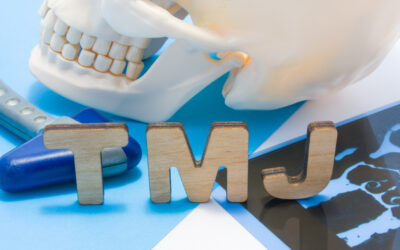A Guide to the Different Types of Sedation for Oral Surgery
For many types of dental surgery, patients require sedation to ensure they are comfortable when undergoing operations. Sedation can also help reduce the pain patients feel when performing oral surgery.
In fact, around 6 in 10 American adults fear dental visits. Sedation can help reduce these fears and makes oral surgery easier to get through.
Many dentists use multiple different types of sedation for oral surgery, each having its positives and negatives and best applications. As a patient, you must be aware of some of the most common methods dentists use to know what to expect when it is done to you.
Who Needs Oral Surgery Sedation?
Many people can benefit from sedation when healthcare professionals perform dental procedures on them.
One of the main reasons why doctors and dentists use sedation is to reduce the pain you feel when surgery is performed. Yet, sedation can also be helpful if you’re getting a more routine treatment.
For example, if you have dental anxiety, sedation can be a great way to keep you calm when visiting your dentist. It can also help people who have an overly sensitive gag reflex. Stopping this involuntary function through sedation can make the procedure much easier.
Plus, if the patient has extreme teeth sensitivity or feelings of claustrophobia, then sedation can be a great way to combat these problems. This can provide a more seamless dental experience when getting things such as dental implants.
Different types of sedation are best for different scenarios. Here’s a look at some of your options.
Local Anesthesia
When offered a choice of which type of oral surgery sedation they’d prefer, many patients will choose local anesthesia. This type of sedation is where the specific area that a dentist is working on is directly applied with a numbing agent. This eliminates pain or feeling in the area, meaning that the dentist can perform the operation without much discomfort for you.
Local anesthesia gets to work very quickly but only lasts for around an hour. This means it’s best for smaller, less invasive procedures.
The patient is still conscious when a nurse gives them local anesthetic. Because it’s isolated to a specific area within the mouth or jaw, most people can drive home once the procedure is over.
Local anesthetics are commonly used to remove a tooth or fill in a cavity, or if you’re having all-on-four teeth implants, although it’s likely not best for more serious oral surgery.
Nitrous Oxide
Sometimes local anesthesia isn’t enough, especially if you require a larger, more complicated dental surgery. In these situations, as a patient, you’ll be offered nitrous oxide instead.
This type of sedation is a gas and is administered via a mask that covers the nose. It’s administered alongside a supply of oxygen to ensure patient safety.
Dentists use this type of sedation to make patients more relaxed and can make them feel drowsy, goofy, and prone to laughing.
Nitrous oxide is commonly known as ‘laughing gas’ in terms of slang because of how giddy it can make patients feel.
Those who take nitrous oxide are still conscious during their oral surgery, although they’re less likely to feel as much pain or discomfort when under the influence of this sedation technique.
Like local anesthetic, nitrous oxide wears off quickly, which is best for shorter procedures. This type of sedation will not interfere with other medicines that you may be taking, and it may also be possible to drive home after your procedure, providing that it has worn off fully.
Nitrous oxide is a good choice for patients who feel anxious about their teeth in a day surgery, as this can relax them and make them far more submissive so that the procedure can go on with less hassle and stress for everyone involved.
IV Sedation (Also Known As General Anesthesia)
Dentists use IV sedation to make the patient unconscious during the procedure. Some oral surgeries are invasive and do not suit the patient being awake during them.
As this type of sedation dentistry makes you totally unconscious, it ensures that you don’t feel any pain or discomfort during the procedure. This option is a bit riskier, though, and needs to be heavily considered, and you’ll likely be examined to determine if you can handle this type of sedation.
Before IV sedation, there are a few things that you may have to do to ensure that it’s as effective as possible. It’s recommended that you don’t eat before your oral surgery and that you also abstain from any medication before your oral surgery.
The dentist will also not allow you to drive home after this type of sedation, so you must arrange alternative transport.
Reducing Treatment Pain
Sedation may sound like a scary aspect of oral surgery; however, it is a key component that makes these procedures a lot easier for patients to deal with. They’re used for a wide variety of treatments, and for most people, the choice is theirs in terms of which sedation you want to use.
Now that you know what to expect with oral sedation, check out our dental implants and other procedures to help you create an amazing smile.



